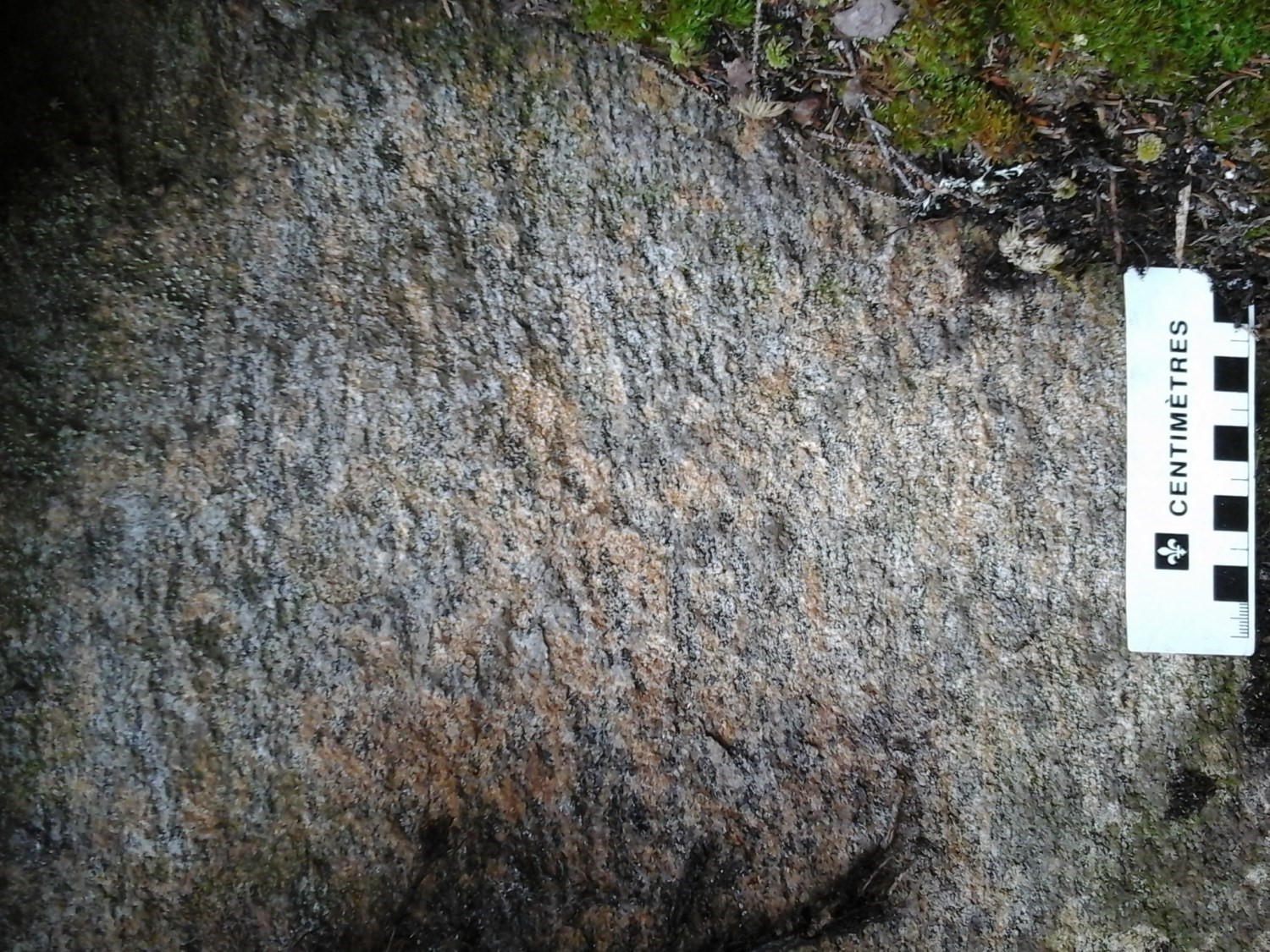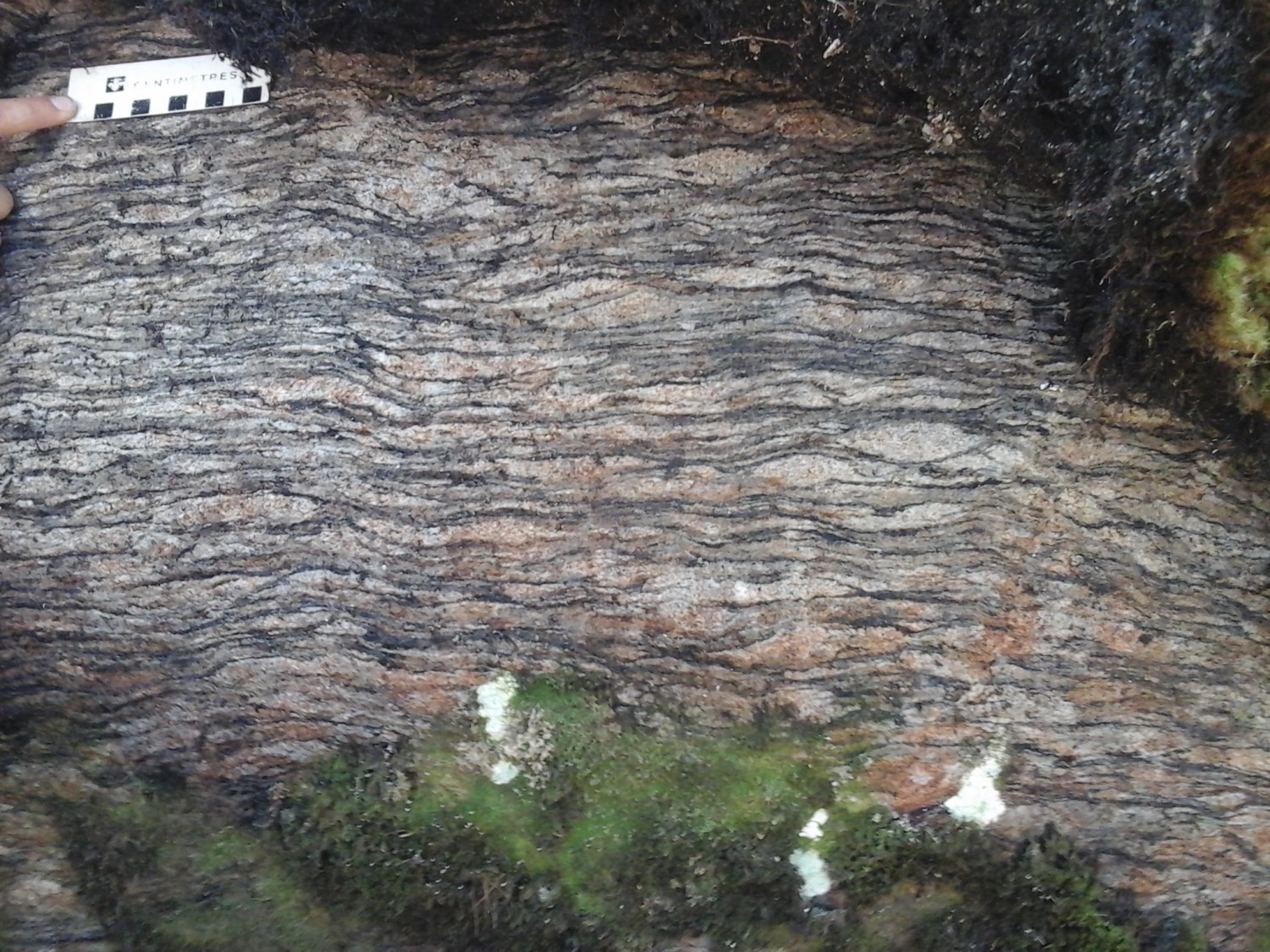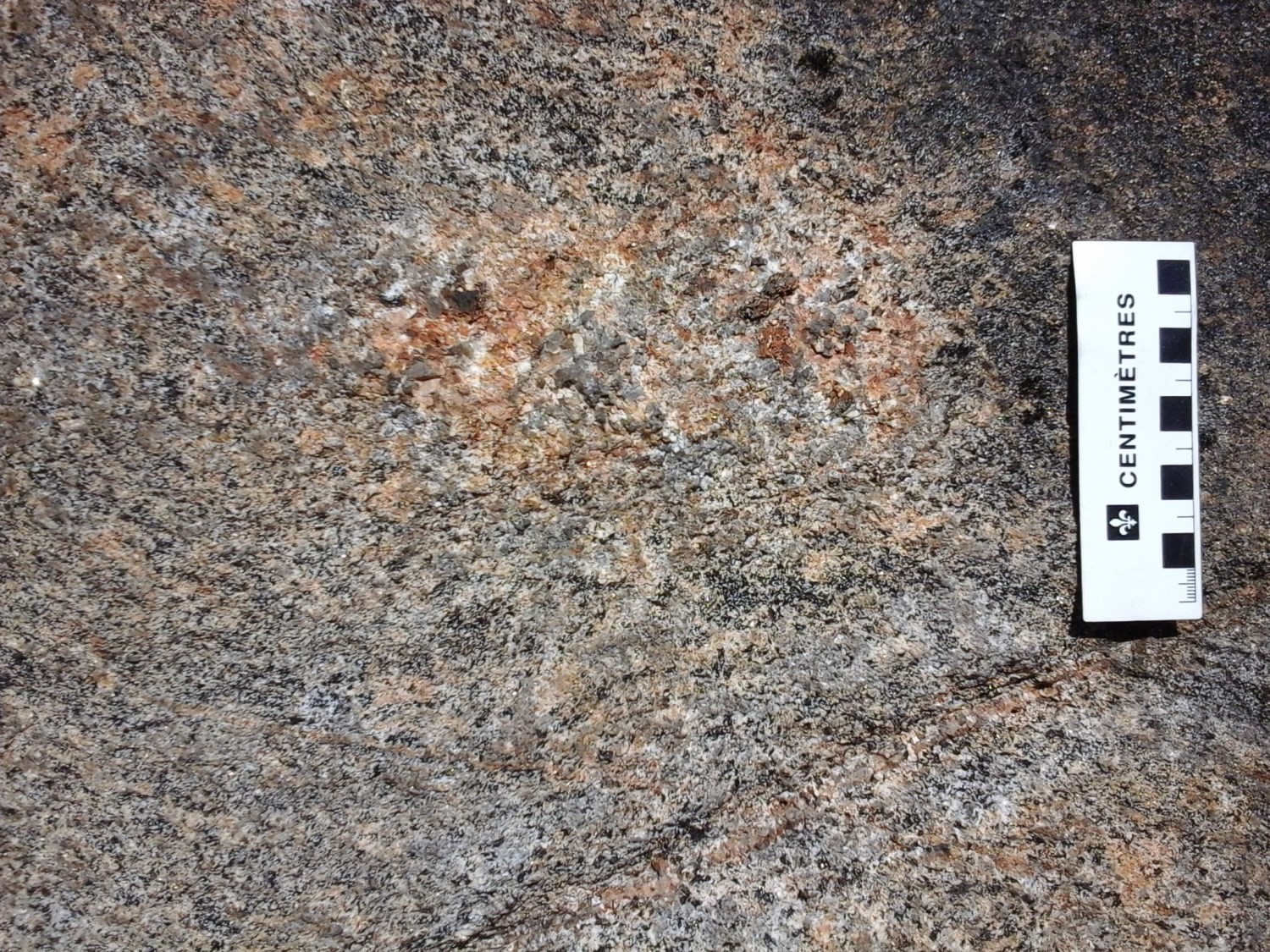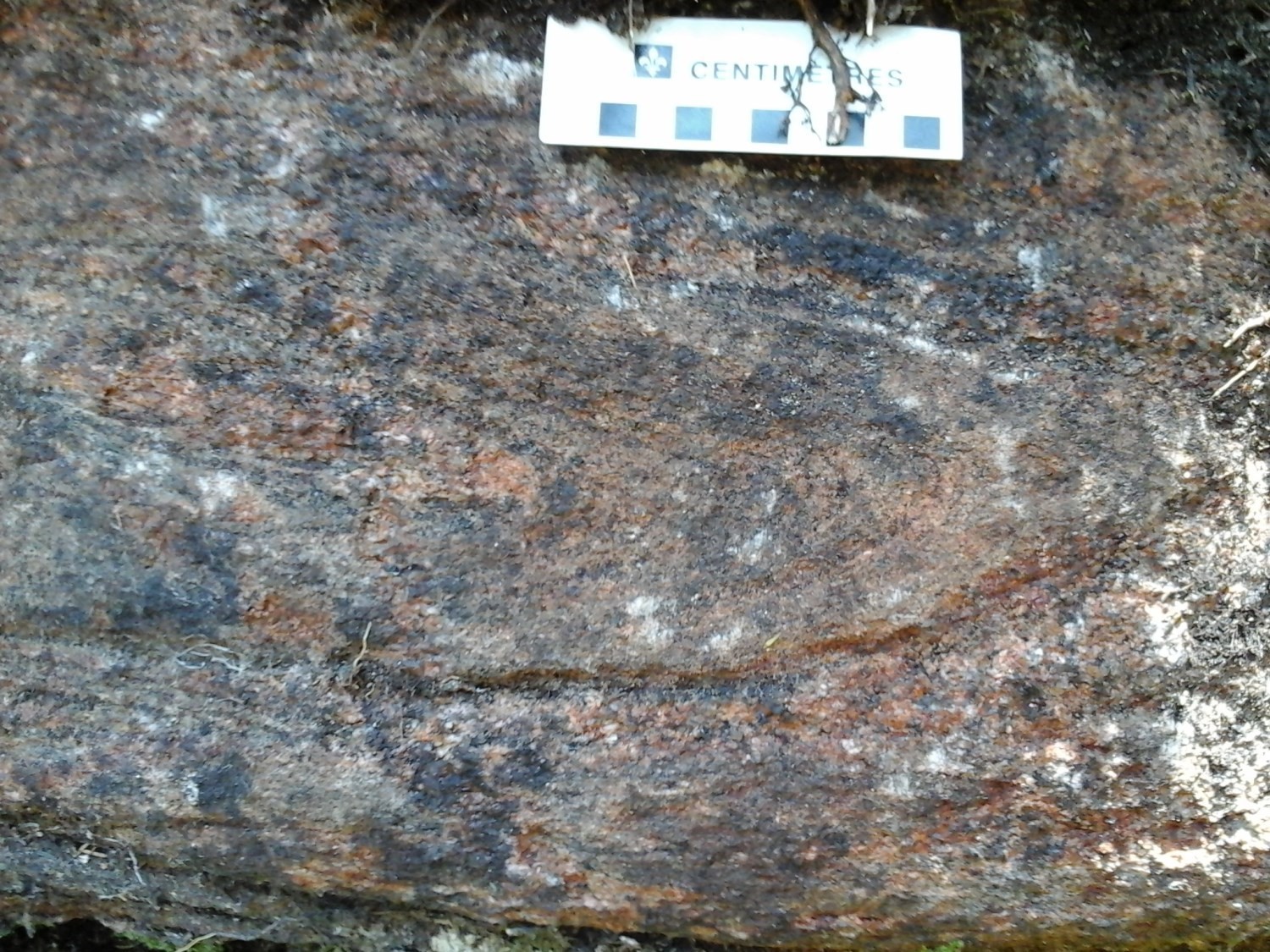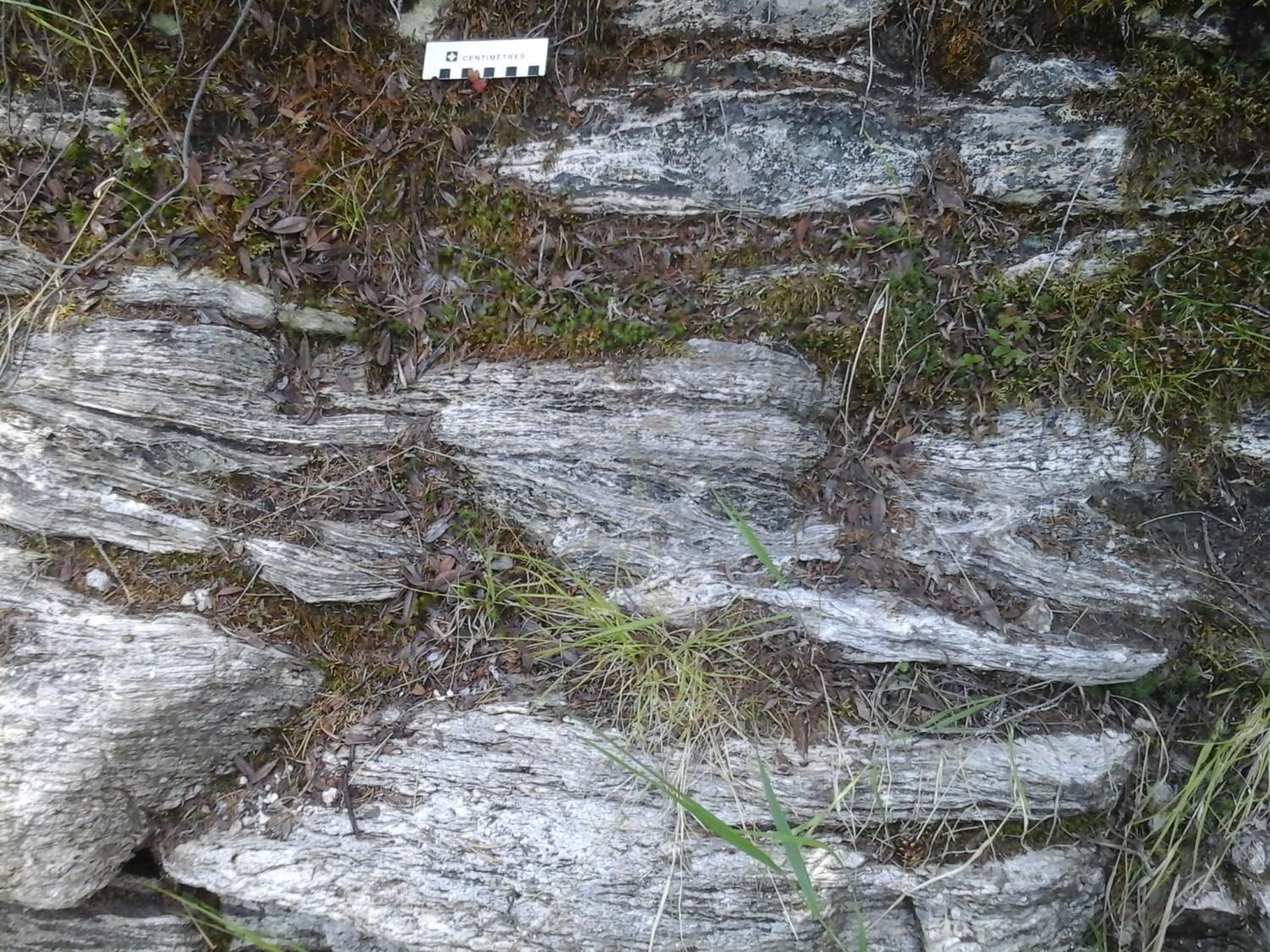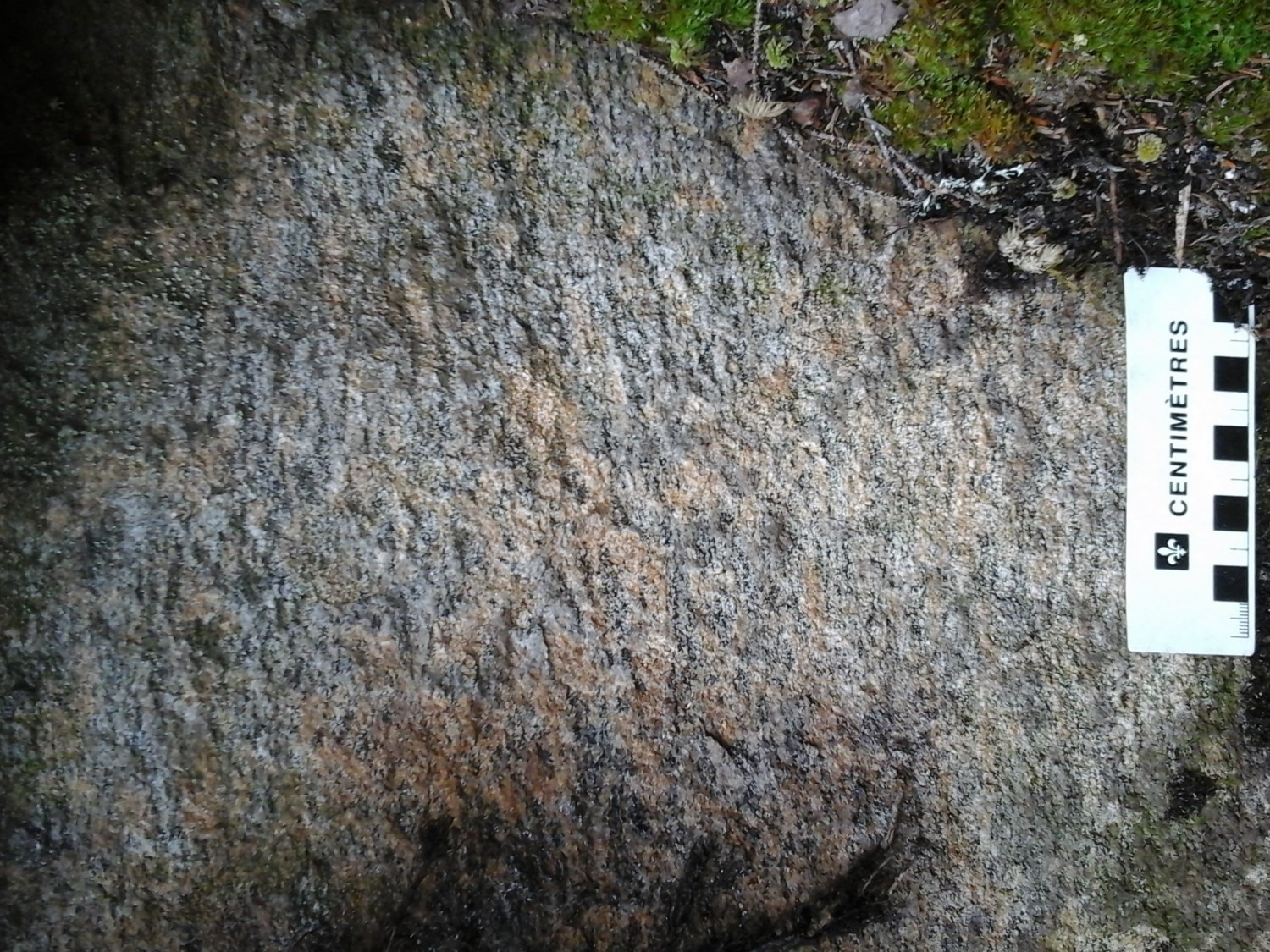
None
| Author: | Moukhsil and Daoudene, 2019 |
| Age: | Mesoproterozoic |
| Reference section: | None |
| Type area: | NNW end of sheet 32A07 |
| Geological province: | Grenville Province |
| Geological subdivision: | Allochton |
| Lithology: | Felsic, intermediate and mafic intrusive rocks |
| Type: | Lithodemic |
| Rank: | Suite |
| Status: | Formal |
| Use: | Active |
None
Background
The Léo Plutonic Suite is a unit introduced by Moukhsil and Daoudene (2019) during mapping of the Commissaires Lake area in Saguenay–Lac-Saint-Jean. It is a batholith located in the NW corner of NTS sheet 32A07. Interpretation of recent regional aeromagnetic maps (Intissar and Benahmed, 2015) shows that this suite is also present in adjacent sheets 32A06, 32A10 and 32A11, whose geology has not been updated since the 2000s (MNRF, 2010).
Description
The Léo Plutonic Suite is a polyphase batholith formed of felsic, intermediate and mafic rocks. The different lithologies are mangerite, charnockite, opdalite and gabbronorite. The sequence is easily circumscribed on aeromagnetic maps given its moderate to high magnetic anomalies (Intissar and Benahmed, 2015).
Mangerite is salt and pepper in altered patina and green-brown in fresh exposure. It is medium to coarse grained, magnetic, foliated and locally porphyritic, mostly with plagioclase phenocrystals. K-feldspar is present locally in outcrops, it appears perthitic in thin section. Quartz occurs in large zones within which subgrain joints form a polygonal texture with undulatory extinction. The rock contains local myrmekites. Ferromagnesian minerals are hornblende, biotite and orthopyroxene, which are generally altered, particularly in iddingsite. Zircon, opaque minerals and apatite form accessory phases.
Charnockite (hypersthene granite) is generally grey-pink in altered patina and beige-pink in fresh exposure. It is medium to coarse grained and highly deformed. The rock is locally banded and shows compositional layering of horizons more or less rich in ferromagnesian minerals. Locally, charnockite is gneissic and porphyroclastic. The rock consists of quartz forming large zones with undulatory extinction, perthite, magnetite, hornblende, biotite and orthopyroxene. The latter is also altered to iddingsite. Zircon, opaque minerals (magnetite, pyrite) and apatite are accessory minerals. In thin section, plagioclase is fractured and commonly sericitized.
Some opdalite (hypersthene granodiorite) outcrops are observed in this unit (e.g., 18-MV-1240). Opdalite has an altered patina and a fresh surface similar to charnockite, which does not easily distinguish them in the field. In thin section, opdalite is similar to charnockite in mineralogy, but has more plagioclase than K-feldspar. It is also foliated and locally folded.
Gabbronorite is grey-black in altered patina and greenish to greyish in fresh exposure. It is mainly coarse grained. Ferromagnesian minerals (pyroxenes, hornblende and biotite) and opaque minerals form millimetric clusters. Hornblende is green and occurs as large crystals containing apatite inclusions. At outcrop 18-MV-1233, gabbronorite is fine to medium grained and appears migmatitic, as indicated by the presence of millimetric to centimetric tonalitic veins (leucosome). These veins are both conformable and unconformable to foliation.
Thickness and distribution
The Léo Plutonic Suite is mapped in the NW corner of sheet 32A07, where it covers an area of 43 km2. Interpretation of aeromagnetic maps indicates that the suite continues northward and westward in adjacent sheets 32A10, 32A11 and 32A06. It covers a total area of 325 km2.
Dating
None.
Stratigraphic Relationship(s)
The Léo Plutonic Suite intrudes into the Bardeau Plutonic Suite. It is rich in metasedimentary rock enclaves and klippes of the Barrois Complex. The Leo Plutonic Suite is bounded by a deformation zone that marks contact with its host rock. Dykes and enclaves of garnet gabbro with trace sulphides are recognized in this suite.
Paleontology
Does not apply.
References
Publications available through Sigéom Examine
INTISSAR, R., BENAHMED, S. 2015. LEVE MAGNETIQUE AEROPORTE DANS LE SECTEUR OUEST DU LAC-ST-JEAN, PROVINCE DE GRENVILLE. MERN, GOLDAK AIRBORNE SURVEYS. DP 2015-06, 7 pages and 2 plans.
MRNF. 2010. CARTE(S) GÉOLOGIQUE(S) DU SIGEOM – feuillet 32a. CG SIGEOM32A, 16 plans.
MOUKHSIL, A., DAOUDENE, Y. 2019. Géologie de la région du lac des Commissaires, Province de Grenville, région du Saguenay–Lac-Saint-Jean, Québec, Canada. MERN. BG 2019-01.


